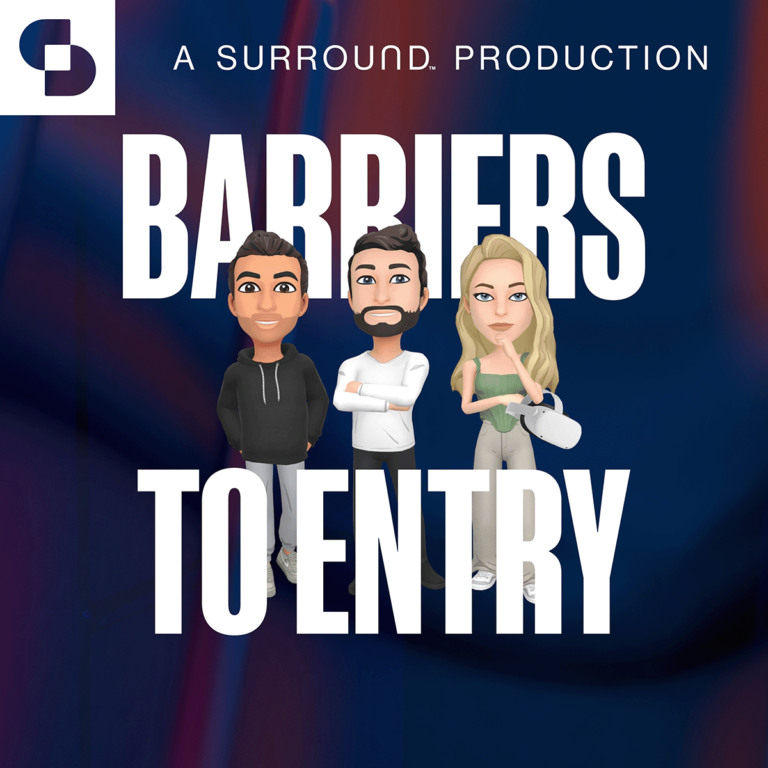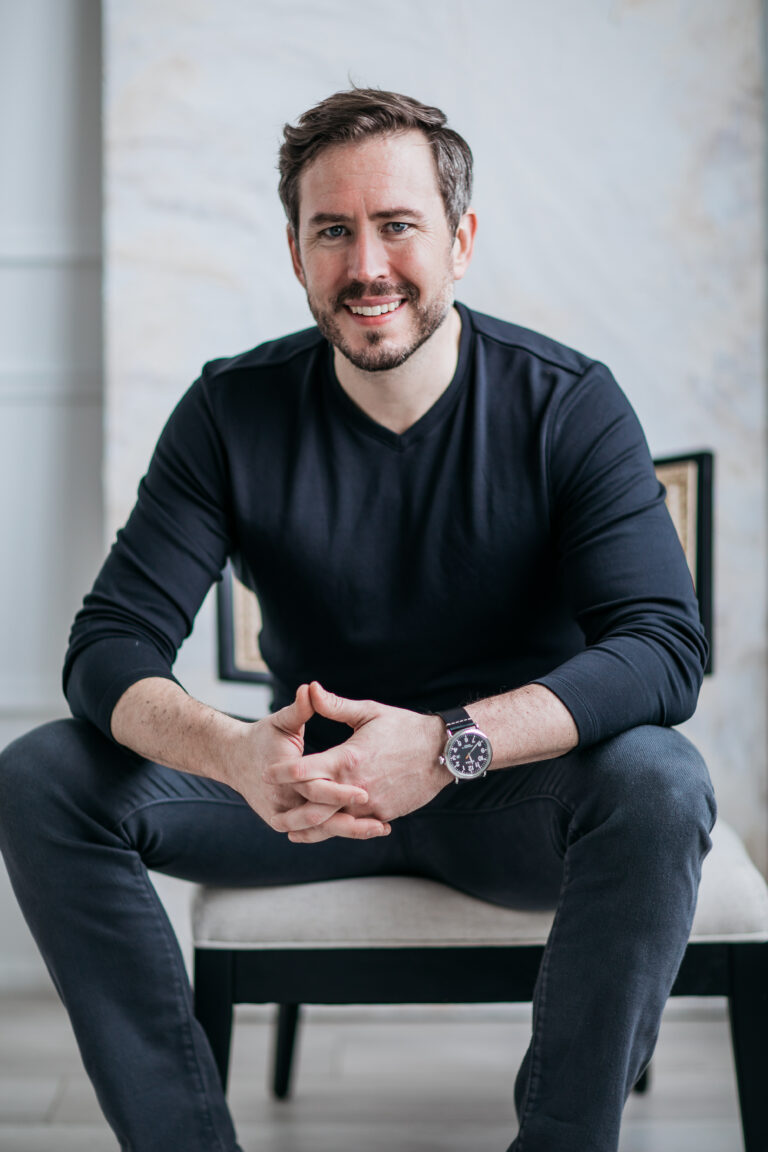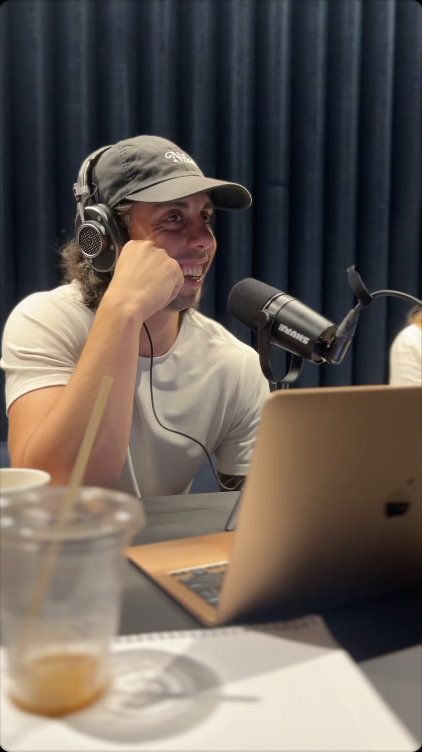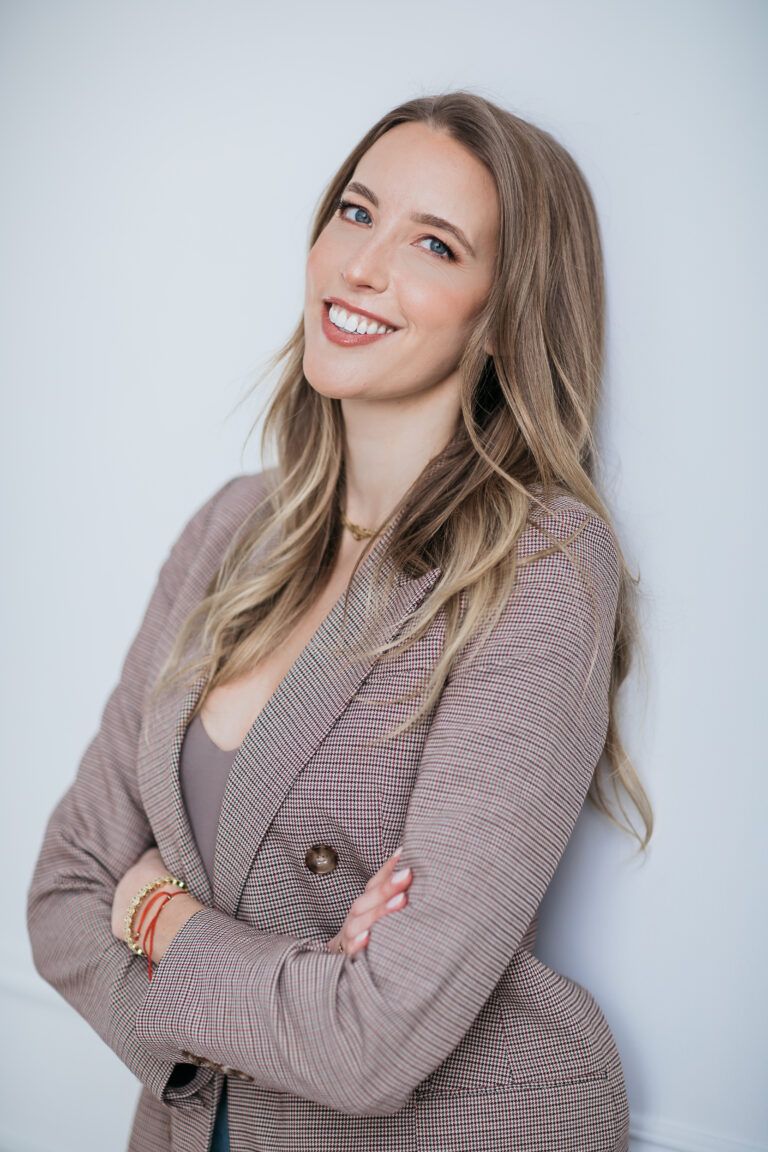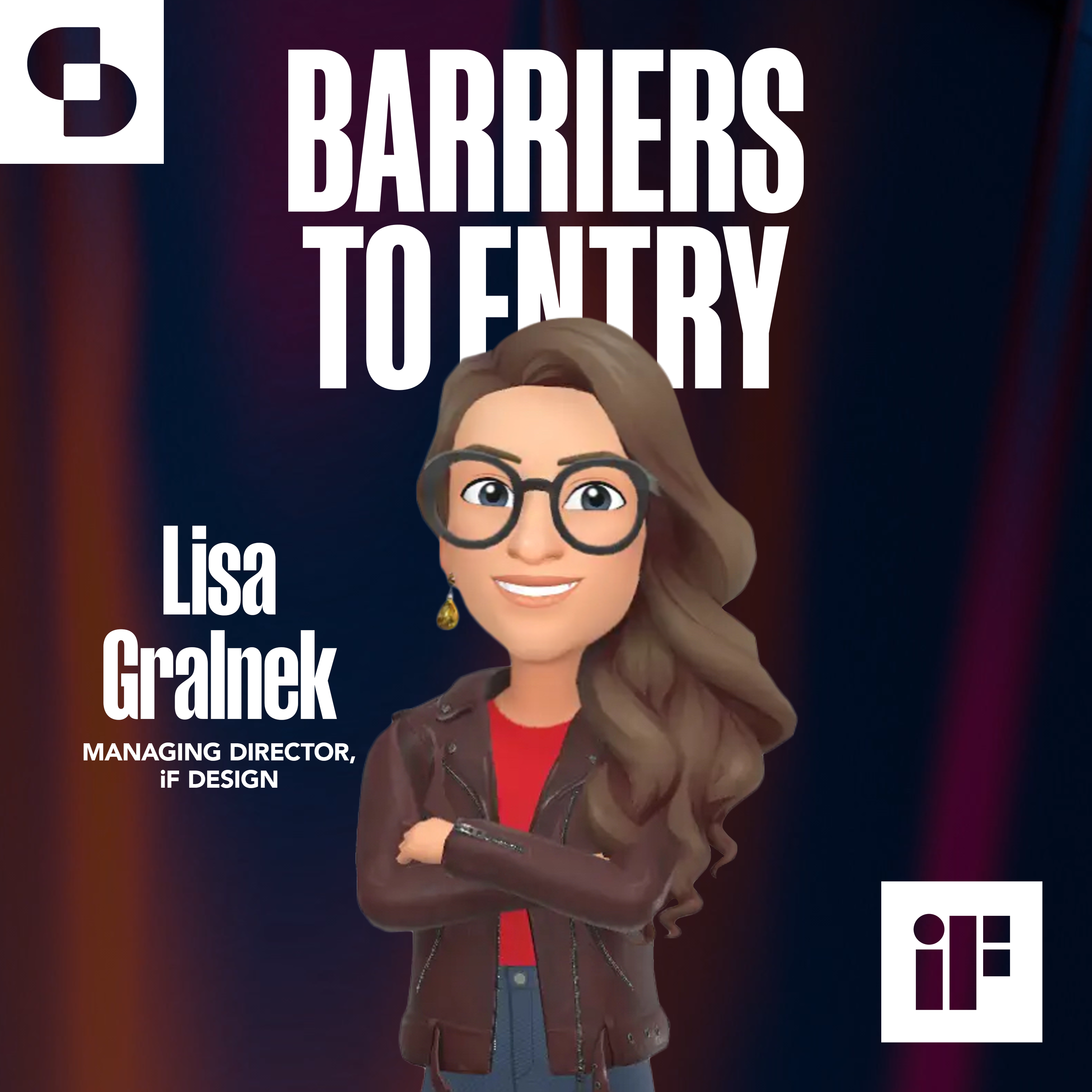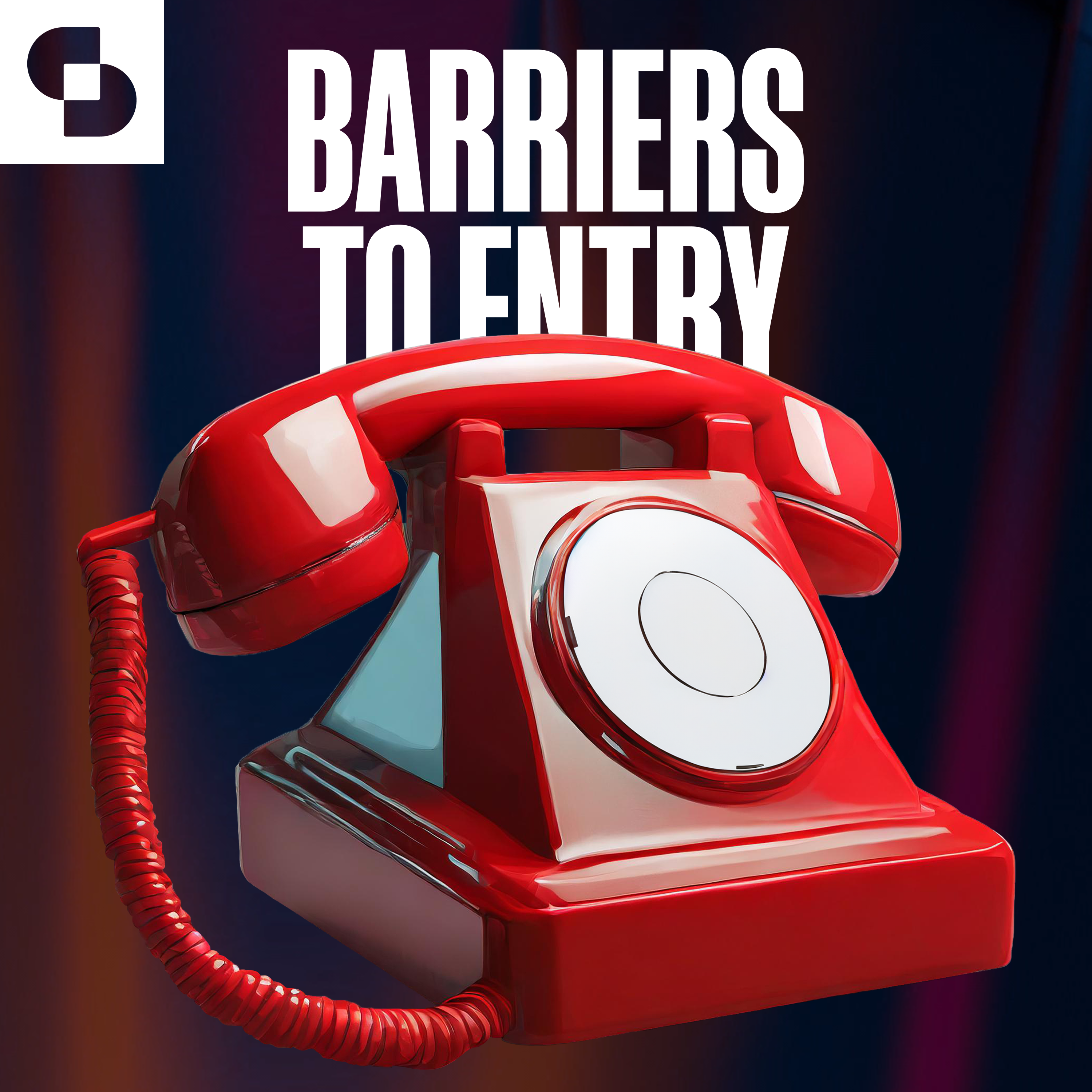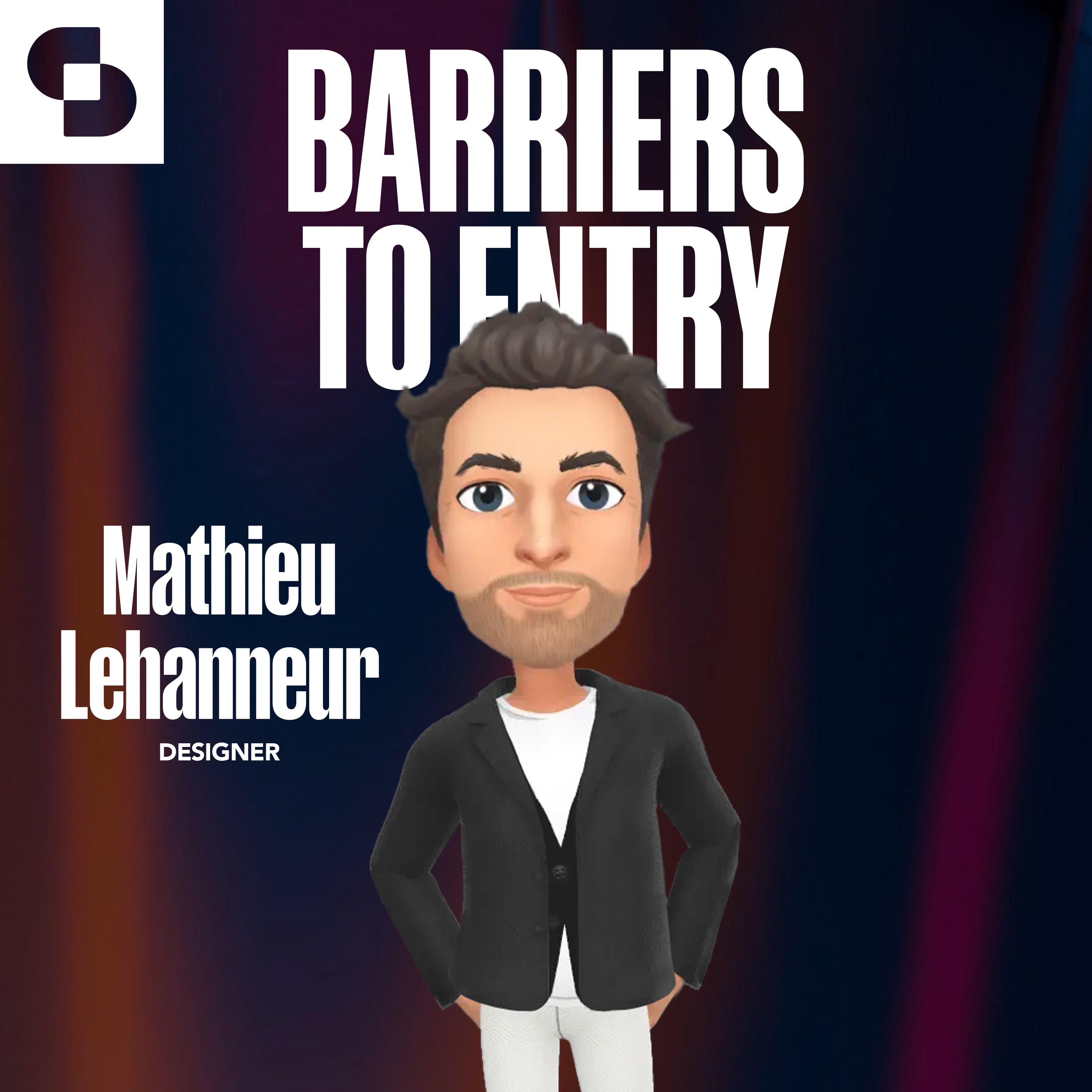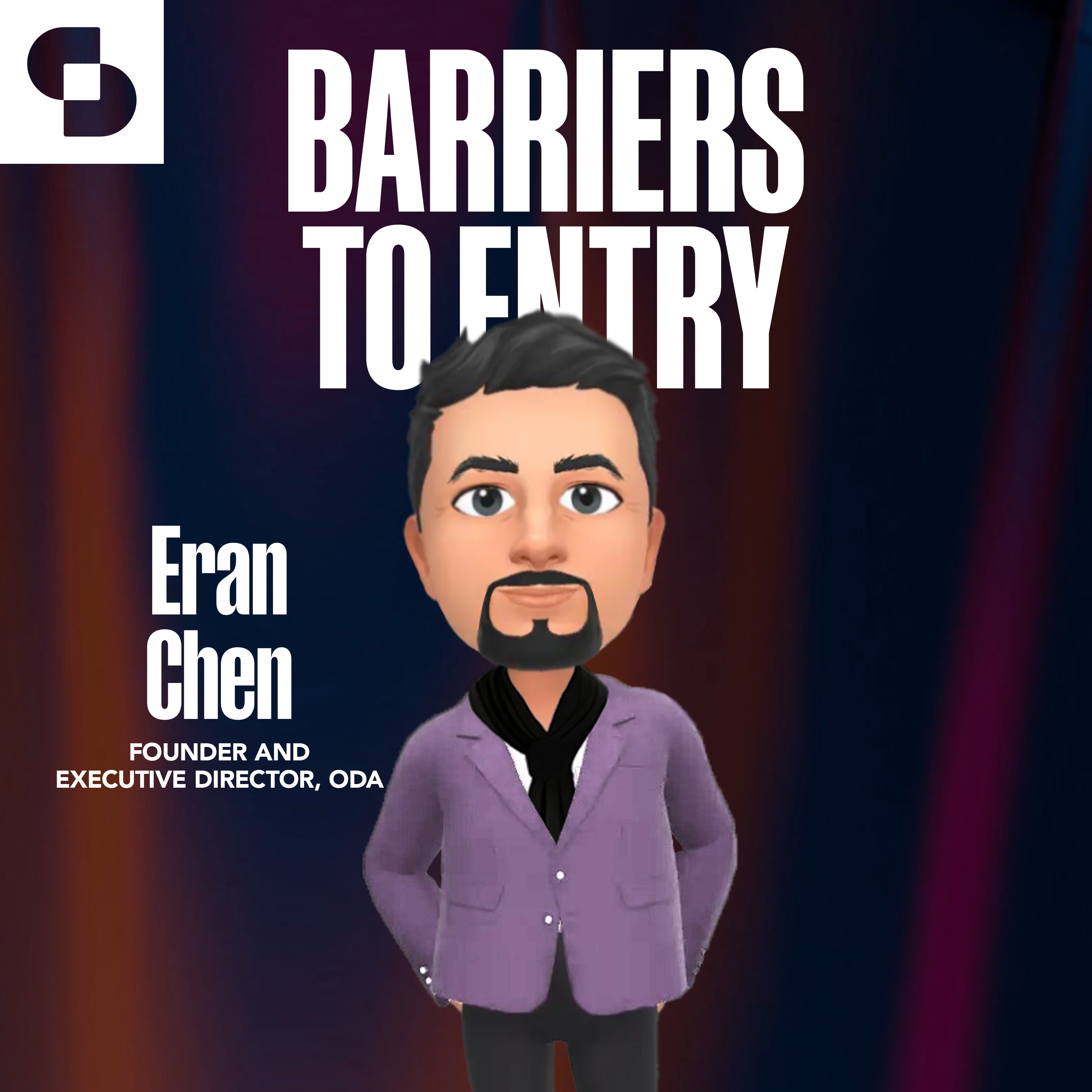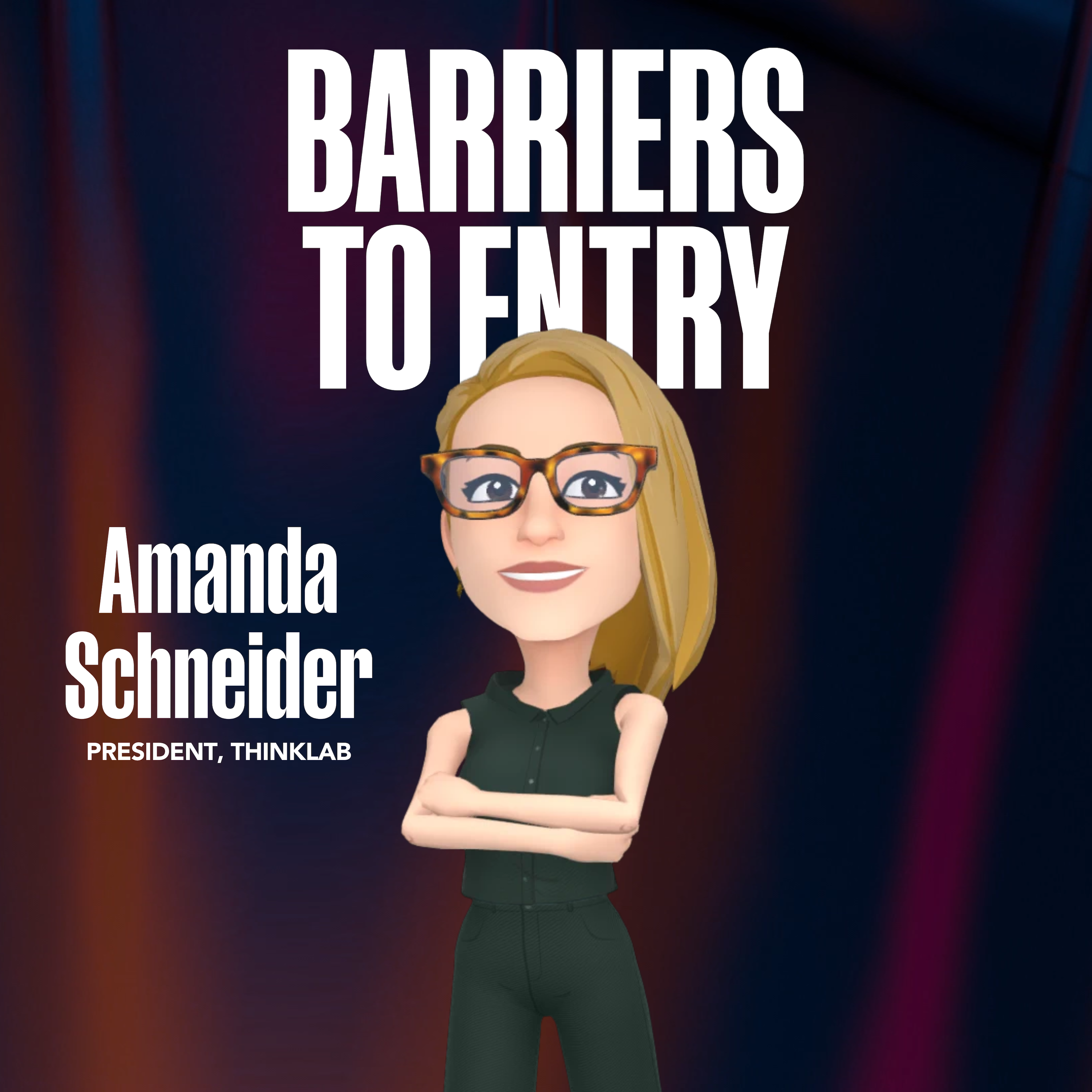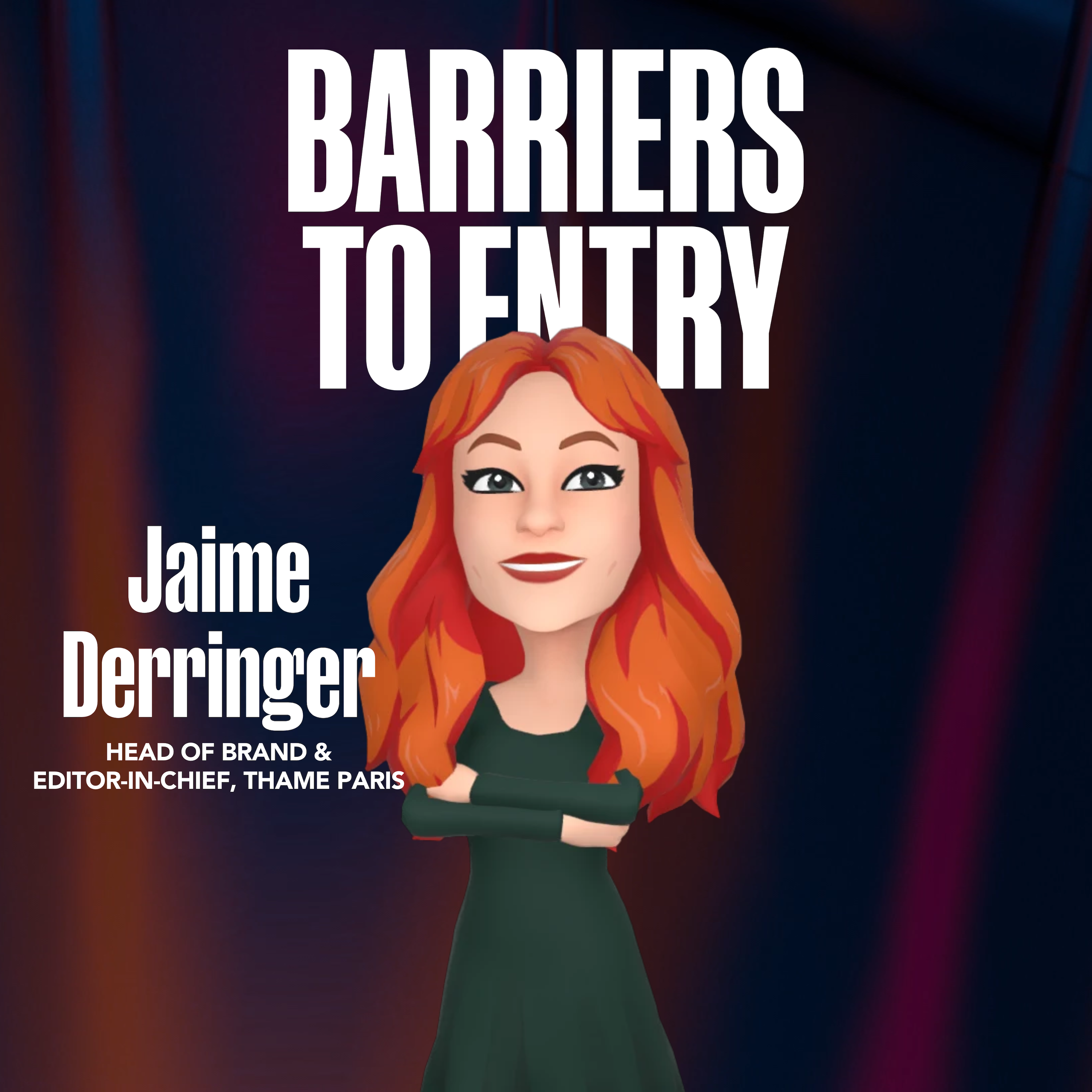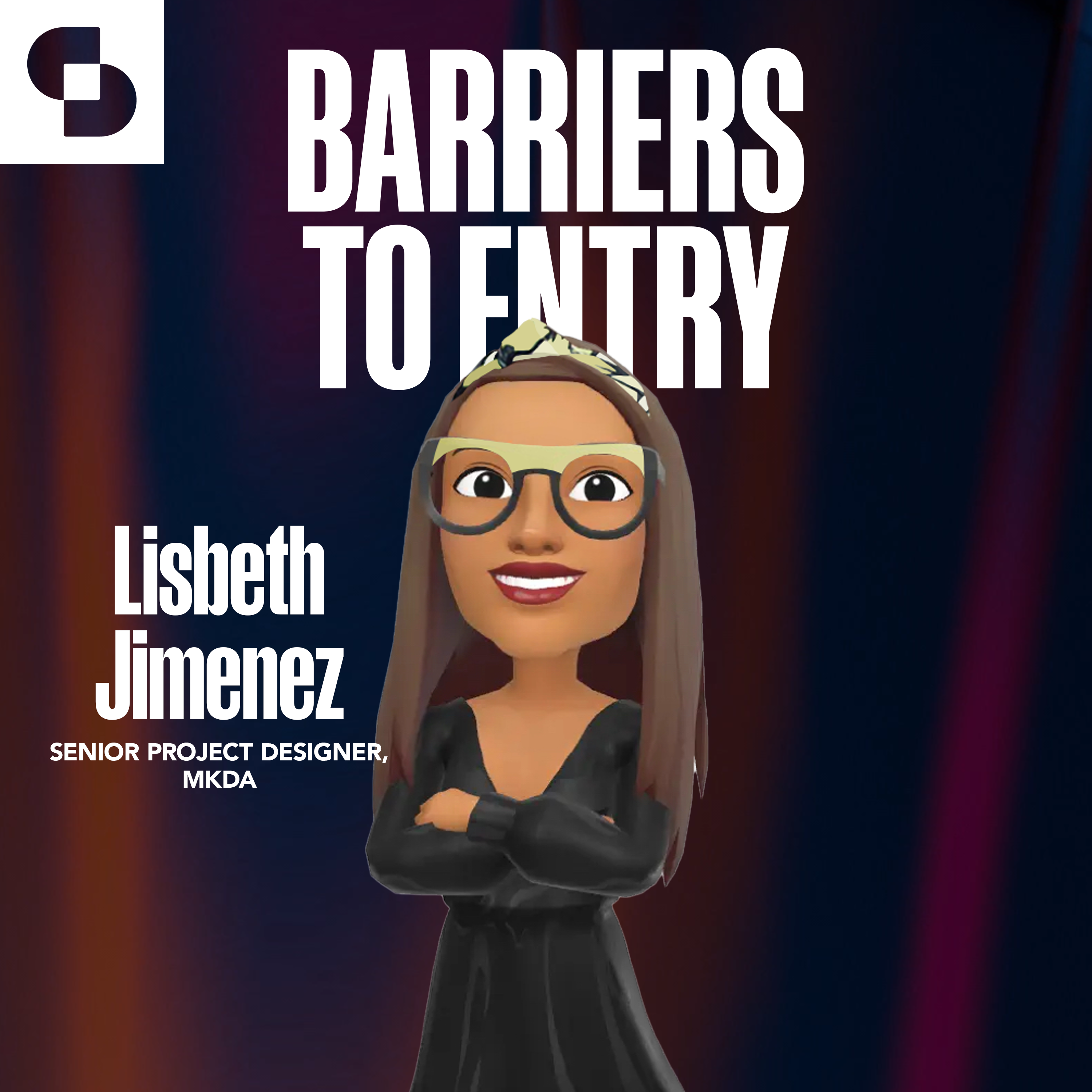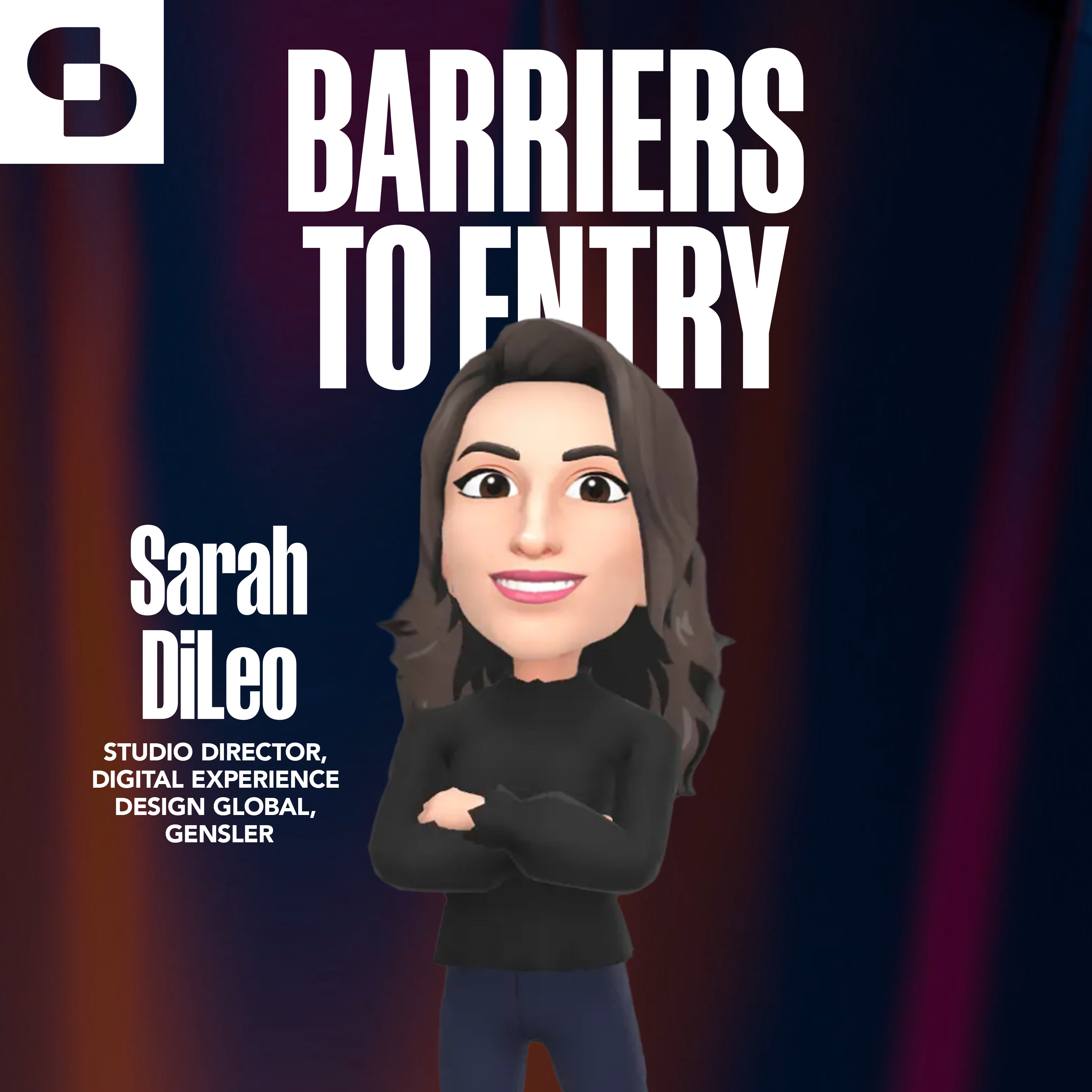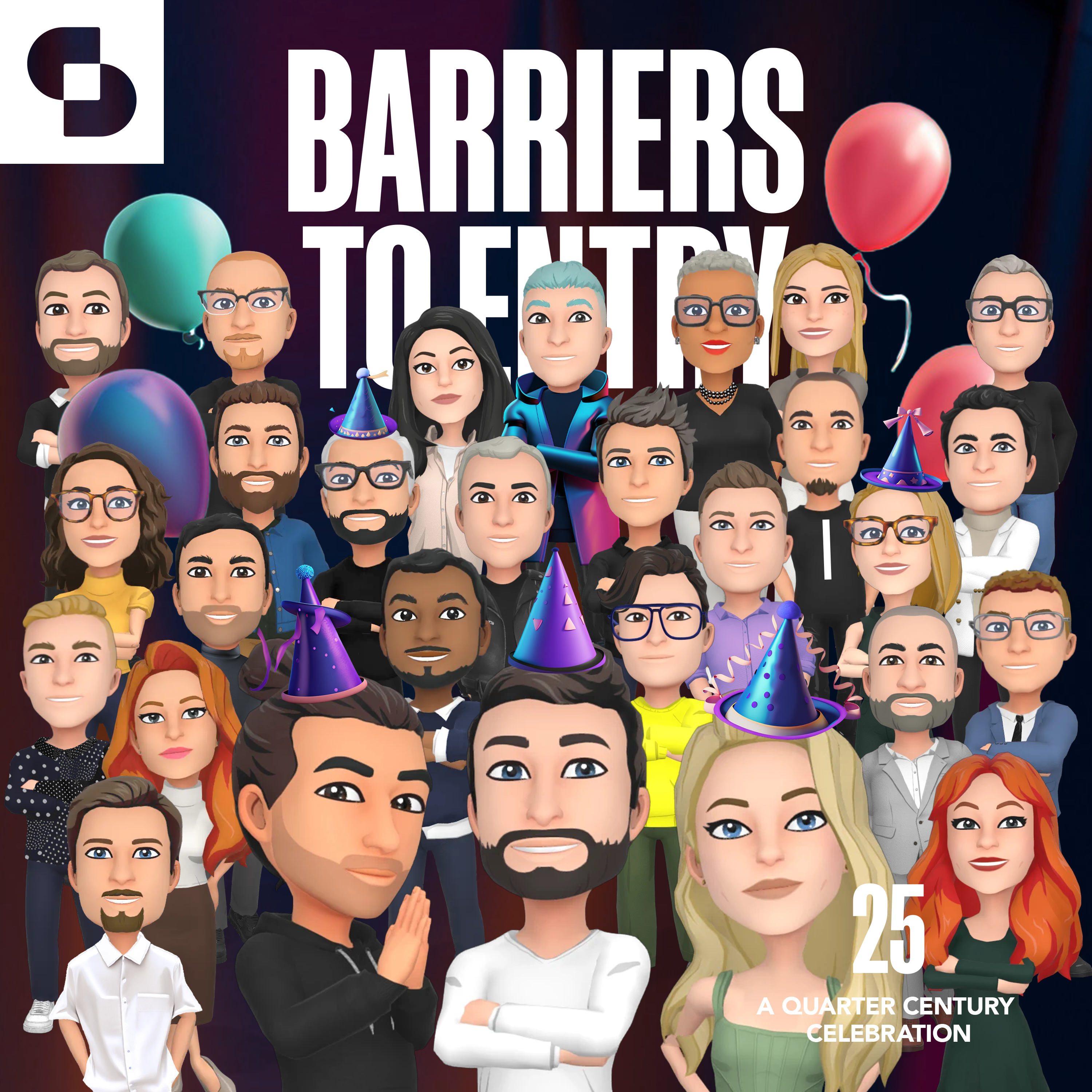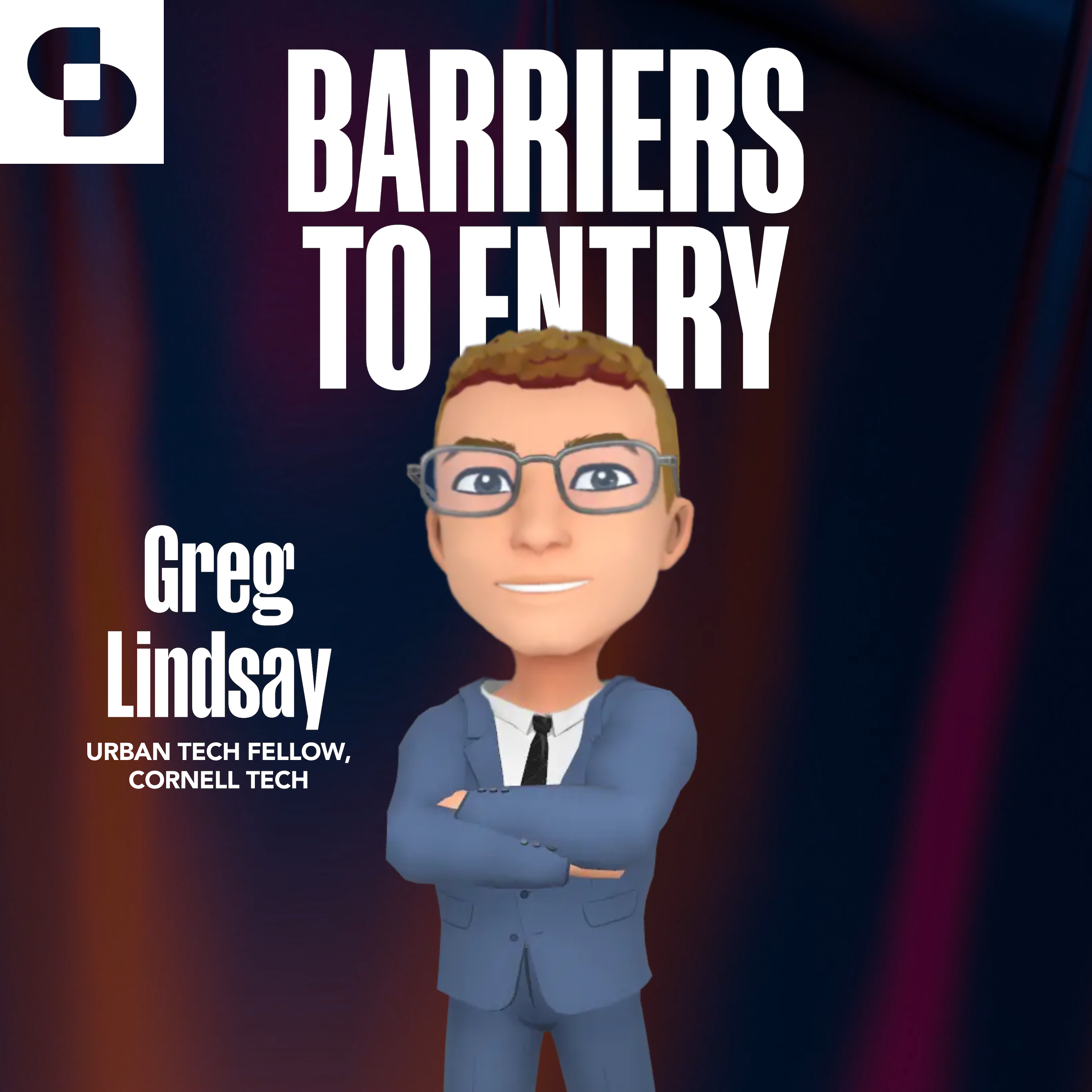This episode was produced in partnership with Audo.
In a NYCxDESIGN special, the pod squad assembles live at the Audo Copenhagen showroom in Tribeca for an in-person conversation with 3rd generation member of the founding family, Joachim Kornbek Engell-Hansen. In this wide-ranging conversation in front of a live audience, we get into the evolution of the Audo brand, the many ways in which design innovation is achieved through collaboration with different kinds of partners, and the impetus for the re-branding of MENU and by Lassen to Audo Copenhagen, as announced during the recent International Contemporary Furniture Fair in New York.
Connect with Joachim Kornbek Engell-Hansen on LinkedIn!
Moments to check out:
- The inspiration behind Audo Copenhagen as a ‘design lab’ (starts at 3:59)
- Product design collaboration from sketches to 3D models (starts at 11:16)
- MENU becomes Audo Copenhagen – inside the re-branding (starts at 15:34)
Connect with our hosts on LinkedIn;
References and resources:
Discover more shows from SURROUND at surroundpodcasts.com.
This episode of Barriers to Entry was produced and edited by SANDOW Design Group. Special thanks to the podcast production team: Hannah Viti, Wize Grazette, Kasey Campbell Thompson, Rob Schulte, and Samantha Sager.
Although the transcription is largely accurate, in some cases it is incomplete or inaccurate due to inaudible passages or transcription errors.
Joachim: [00:00:00] So that’s kind of where the whole Audo idea started because that was when we said, okay, we should build a brand where you almost view it more as a magazine. Somehow it was more centered around the brand essence and the brand universe you step into.
Bobby: Welcome everybody to our live recording today of the Barriers to Entry podcast.
It’s New York Design Week, and we’re coming to you today with a very special guest in a very special setting. Hi. We spend a lot of time speaking about innovation on the podcast, and today we’re going to come at this conversation from a fresh angle, speaking with someone who lives inside their brand as a part of the process of helping it evolve.
We couldn’t be more excited to be joined by Joachim Kornbek Engell-Hansen. Brand and design director at menu in the Audo and third generation of the founding family and get this, we are here together, live in the Manhattan based menu showroom, surrounded by an incredible group of guests who are here to celebrate the rebrand of Menu, which will be referred to as Audo Copenhagen starting June 1st.[00:01:00]
Yeah, there’s those incredible guests. Ah, there you go. Nailed the cue. Thank you everybody. We’re going to get into that as well as a number of other exciting topics, but first things first, all the way from Copenhagen for the first time in New York and. Five years.
Joachim: Five years, years.
Bobby: Ow. Welcome to the podcast, Joachim.
Thank you.
Andrew Lane: Thanks. It’s great having
Bobby: you. Thanks for joining us Joachim. So you grew up in furniture, you’re third generation member of the menu family, your brother, family, and tradition. Your sister worked at Menu as well. So what was it like growing up in a family like this, and tell us a little bit about the inspiration that drove you into the design business as well.
Joachim: First of all, thank you for the most expressive presentation. Nice. Right. Thank you. Thank you. Bad. I don’t know if it’s because we’re where we are, but of Danish people are just more, uh, late or
Bobby: downstream. I’m a New Yorker. I’m a Long Island, so big, which is big and bold.
Joachim: Fantastic. I always say like, Even though we work with furniture and lighting and, you know, design in general, I think the biggest thing around the family is that [00:02:00] we’re not C dust from, you know, you have these Danish families who go way back, you know, a hundred years and you can show, you know, factories and so on.
And we’re not really like that. We are more, I think, in an entrepreneurial family in some ways. So, Not that I don’t love working with design, cuz I really do. It’s a big heart of mine. But I think it’s more the fact that it’s some about creating something so you, you can say a tradition, a menu and so on.
But it’s been more the thing around, you know, being innovative and trying new things out. It, it almost feels like a seventh. We are four kids in the family and two parents, so like a seventh family member growing up with it. So I never really had that private life or work life and it’s always been so much part of my life.
So I think that’s what I. Take with me growing up and now being an adult. Sure. Yeah. If that was an answer, it is.
Andrew Lane: That’s great. And in your role right now, I mean you talk about the vision, but you’re leading the brand direction. Can you talk about how you came into this role and, and what that really feels like?
Obviously working with your family and leading the family business that you’ve [00:03:00] been so engaged with for your whole life.
Joachim: Yeah, it sounds so, um, big and formal when you put it that way, but that’s something I try to do and take it on a not so formal level. I think menu and, and our direction is very much, you know, of course there’s a lot of strategic thinking about what we do and so on, but I also think some of the greatest thing we’ve done throughout the years has been, you know, more.
By something that is happening, you know, due to either connections with people or opportunities or ideas that are popping up now and then, so I think in the same way of like, you know, how does it feel to be leading the brainstorm? I don’t think so much about it. It’s a huge privilege. I think it’s, of course, it gives me so many opportunities to meet.
A lot of people, exciting people that sometimes take a little for granted because I know not everyone get that opportunity. Well, all the
Andrew Lane: people in the room here today. Exactly. Exciting
Joachim: group sitting here, which is my favorite spot to sit. That’s a joke. Yeah.
Andrew Lane: The left track. We’ll, we’ll pipe that in later from the Yeah, yeah,
Bobby: yeah.
Well we’re in New [00:04:00] York, right? Joachim at the menu Showroom. But we mentioned Otto in the introduction and you spend most of your time in Copenhagen. Yeah. Um, and before we were on air, so to. Week we were chatting about Audo Copenhagen, which is an interesting space and I’d love if you can chat with the folks in the room and and our listeners about what that space is all about and how you’ve manufactured a space that leads to creativity and how that inspires your design direction and perhaps the design direction of the brand for which you lead design direction.
Joachim: Very shortly. I don’t know if everyone knows Audo right now, the Audo as it’s called, but I think to understand Audo, I just have to quickly take everyone back on, on a journey, please. Yeah. Menu was known for primarily like accessories and especially kitchen houseware things. Now we may be around 13 years.
Back then we said we wanted to change the brand entirely, basically, which came from the willingness to go out. It was very much kind of, Being more and more focused. Our customers was more, more focused around discounts and you know, how can we get it cheaper? And it was not, it was like, it [00:05:00] felt like a hamster wheel.
This is more words that I get from my father at that time. Cause he had been there for so many years and that was what it felt like. You know, it, it didn’t really make sense. It was just like creating new products, giving discount, creating new products, getting discount, terminating products and so on. And so, kind of wanted to say, how can we, you know, With his life, spent the best years of his professional life, you know, in a way that made sense.
So he basically sat down and said, I wanna do something different with this brand. That was menu at that time, which had a long history and long heritage back from my grandfather and said we should do something completely different. He didn’t know exactly what it was at that time. This was, we are back at the time where, you know, you had a lot of brands popping up in Denmark, like Goby and Hay and Tradition came and you know, and so on, which I think have gone through like golden age in many ways.
But this was like right before that started. Um, but I said like, We should do like something more with lifestyle, something more with people, something more where, you know, we’re not so reluctant to the same customers, uh, not people, but, you know, uh, [00:06:00] shops and how they wanna buy into it. So that’s kind of where the whole Audo idea started, because that was when we said, okay, we should build a brand where you.
Almost view it more as a magazine. Somehow it was more centered around the brand essence and the brand universe you step into. And I think we didn’t know order was what it was gonna be like at the very end, but that was when the whole thing started around for many years, we, we wanted to do a magazine instead, to be honest.
And, you know, creating a, a universe rather than the products in some ways. And I think that those ideas in the beginning kind of led to that. We knew when we were gonna open something. Some brands open a flagship store, some people do different things, but we knew that we wanted to do something that kind of made it possible for people to come in and get a different experience where it was more about the guest than it was about the brand.
And that’s how Otto came to life with like, we have 10 residents rooms where we can invite people to come and stay. We have a restaurant, we have a shop, we have a [00:07:00] cafe where families come in and. Or the guests come in. So a long answer to what Otto is,
Tessa Bain: no. What you’re describing sounds like something that’s incredibly human-centric and almost sounds a little bit like a design innovation lab of sorts.
And so curious to kind of from your perspective, uh, here, what a day in the life of a day at the Otto would look like for you? For
Joachim: me, it looks maybe a little different from if you just come in. Hopefully if you come in, you just experience this vibrant and place. Mm-hmm. You’re very much inspired by, you know, Sometimes we get at hotel lobbies.
Mm-hmm. Which feels very vibrant. How people come in and you know, they check in or they check out they’re going to the airport. The worst thing I can imagine is like having a dead showroom or gallery where people don’t even dare to go in and experience the things. So hopefully you get a vibrant place. I think for me it’s, I use Audo a lot, almost like human experimentation.
Like seeing how do people actually use the space We redecorated quite often, so it can sign quite simple, but it’s actually really fun to see where do people get drawn to? Where do they sit? [00:08:00] We can see when we change the interior there, how people use the space differently. So I often sit and work in like the sofa and just observe as much as,
Andrew Lane: do you have a, do you have a go-to, not to like, you know, it’s always like, which one’s your favorite kid, but do you have like a go-to sofa chair piece that you like to sit in
Joachim: in the space?
Right now we have the tea room, we have some seatings by the window and you know, so there’s different places and yeah, the space that I like to, when we talked
Andrew Lane: about it before you, you talked about this idea that, you know, sometimes you’re observing and seeing what’s missing in the space, and that sort of helps you to think about what you might design for create next.
Can you kind of talk about that process of looking for the absence or looking for what’s missing within the experience?
Joachim: Yeah, I think of course this like, I think actually this, the way that I use and we use that the most is I get a lot of designs coming in. Or if we work with like the same designers or architects, collaborators continuously, you know, I often get like, oh, we created this piece because we think it could really fit into, you know, either the lobby or, you know, the setting and so on.
And so. I [00:09:00] kinda see how people and designers, they view the space and see what they think is the need. And I think that’s really beautiful because that’s when you know it. It doesn’t just become a piece for its own, the sake of the piece somehow or the sake of the design. So the same way that they use that, I also use it for like, you know, seeing, okay, now we read here, it could be really be nice to use something that can, you know, use the space differently.
So I think it’s like a product design lab somehow that will be my best. Voiding into how we use the space
Bobby: I use. And I mean, you mentioned it for a moment. Collaboration is obviously hugely important for your brand. Colin King is throughout the showroom. Mm. We read about all you’ve done with Norm Architects, whether it’s through menu or if it’s through Audo.
What are the ways in which you facilitate that collaboration? And, and maybe talk a little bit about the spirit of collaboration and, and what that means for the way in which the brand has evolved over the last 12 years and, and your role in that. Mm-hmm.
Joachim: It’s been very, Important throughout the whole menu history and also, especially for me, that we have these collaborations from the outside.
We’ve never wanted to do like an internal design [00:10:00] studio and be very, you know, thinking that, you know, now we have the order, we can just create our own universe here. You know, hire our designers and then do that. That might be just be easier, but I think for one, getting perspectives from the outside. I think, you know, working with Colin from New York, I always used the example of when he designed the interconnect can holder on the.
You know, if we get a Danish design to do a can holder, it’s always like vertical, right? Mm-hmm. We are like, you know, that’s how a can is being used, you know, that is just nonsense. Taking so much space at the table for like one candle and like his view was still different. Like it’s almost like a piece in art, you know?
It’s something it should, you know, fulfill some different senses and you know, in that way it’s super interesting to, I think, work with different cultures. But where you share some kind of aesthetically sets of values, if you can put it that way, or where you can challenge each other. So I think for me, collaborations is just really important.
Cause that’s my kind of like gasoline for getting, not being too focused around our own little [00:11:00] universe, because you can quickly come to, you know, the point where it’s like we say, okay, it’s good enough, we can just, you know, do it from ourself. Because then I think you start just decrease your development.
Mm-hmm. I, I
Bobby: like referring to the, the candle as a
Andrew Lane: nonsense. I’m sure the sales team who’s here is scribbling notes.
Bobby: Right?
Tessa Bain: Yeah. I’m curious too, I mean, the process, you spoke with us earlier about the way that you work with all of these designers is different for each designer. So working with Colin is so different than working with Norm and, and the ways in which.
They go through their design process using things like 3D renderings and goggles or something that’s maybe more like hand sketched. And just wondering if you can speak about those different processes with them. Yeah, I
Joachim: think it’s, that’s probably where I’ve seen the, I think I said it before we got on, but one of the things where I see the biggest change, looking back, it was this, I think design was very much preserved to like industrial designers and you know, you had a sets of skills you could.
3D model your products. If you couldn’t do that, then you know, you didn’t have anything to show. Like hand [00:12:00] sketch was not enough. You knew something about production and so on. And I think working with Colin, if anyone knows him, he’s not a very, you know, realistic guy in terms of what he wants, but he knows exactly what he wants.
But it’s very much from like an idea for hand drawings or mood boards or something. We need to take a role of trying to. Take him to where he vision the product somehow through technical assistance and so on. He comes with a clear vision and, and we try to assist him to where he is satisfied. And then you have other designers who have like very much rooted around the technical part.
And you know, we have a designer after room, a Swedish. Based Taiwanese designer who’s like, sometimes I get the sense like he’s more into his like computer and like, you know, all the things that that can do. And then the design, this is of course not the true, but you know, it’s like he’s so fascinated about how he can use technology and his thing.
So like he always jokes with his wife. I think he has 17 3D printers just printing for him in one room. And like his army of things. So they’re like, every time I say like, oh, I like that idea [00:13:00] I have there, it’s like, oh, I can send you a print. And like he sends me 3D printed mockups. And I think, and he also comes with like these goggles where he can show me the products, you know, one to one.
And it’s like, it’s fun to see like those different, you know, and, and in that sense it’s like, I think we step into another role as a brand, like making sure that we know, know we don’t just make the designs for the. Sake of the, you know, the, yeah, I was thinking that too.
Andrew Lane: Everything fits together so well here.
Like how do you think about taking from all those different angles and bringing it together so you have the consistent aesthetic and a consistent story as the brand? I
Joachim: think it’s very much around the people we work with. I think it’s not because everything has to be the same or anything, but I think it’s nice when you’re sitting down and, and you know, you draw inspiration or talk references that you understand each other.
So I think it’s maybe even more by luck than, you know, things hopefully work together. So I think it’s more from the partnerships or the collaborations we choose where, you know, Danielle Segal, you know, she has some of the same references. She maybe [00:14:00] adds a little bit of more historical touch to the norm Architects do.
And you know, Colin add something different and you know, so I think somehow they also tap into our universe. So hopefully somehow it get electric in a holistic way. When you’re
Tessa Bain: looking for new design collaborations, like what types of things are you looking for in
Joachim: people? I think the chemistry with the design and with the person I would say is everything.
I think if, if you can reference to anything of the same, or if you feel like, you know, there’s some kind of battle in the design phase, I think that’s what they hate the most. Like if I feel that there’s something, you know, why are we not doing that? Or you know, and if I can’t get a clear answer or if I feel like it gets too much of the sake of the.
Design or something, then it gets difficult for me, instincts involved. Right. It’s super important that, you know, we are on the same path. We are going for the same goal. Mm-hmm. And the chemistry is good. And of course we can get to a point where we’re satisfied. So I think it, it’s. Very much on a personal level.
And then of course the design is also a huge part of it. Mm-hmm.
Bobby: So one of the main reasons we’re here today is the transition of the menu brand to Audo [00:15:00] Copenhagen, and you’ve timed that rebrand around NYC by Design Week and I C F F. So from a brand strategy standpoint, can you talk about the importance of the timing and maybe a little bit around the science, why you determined or why you decided to take that step and move menu?
To the new Audo Copenhagen kind of brand name.
Joachim: Yeah, I think in many ways I think we used to have, you know, more traditional fairs and now it’s becoming more like events going on and and design weeks as you also have here. So I think in that sense it’s just, it feel natural to say that. Okay. That will be our kind of flipping the page for a new chapter, basically.
Do
Bobby: you envision lab. Sort of ethos you have in Copenhagen around Audo driving creativity through, I’ll use your phrase, human experimentation in the physical location you have in Copenhagen. Do imagine taking that inspiration that you have in Copenhagen and leveraging that in New York with what menu will evolve into from a physical location standpoint, maybe not now, but
Joachim: down the road.
Mm. I think it’s always been the dream when we did the Audo saying like at [00:16:00] some point, maybe multiply that to different places. I think now we’ve had. Several, two, three locations in New York. I think now we are at this great apartment at a, for me, really, really, really nice location as well. And so hopefully you can see some kind of connection between here.
And also if you come see the Audo, of course we serve more functions in our head in like in Copenhagen because we have the residence and so on. But hopefully it should be like a piece of the same pie experience with here and, and going to Otto. So I think, and I know with the team here, you know, people are super welcome to come and, and enjoy it and I think it’s.
I think that’s what I hear more, most foremost about Audos was that people feel very welcome when they come. And I think, you know, that doesn’t matter if we have a cafe or if we have a shop or if we’re open. Like the fact that people just feel like they can come in, I think is the most important part of it.
So, but yeah, hopefully, you know, the Audo was created without different partners when we did it. So like local, you know, we have ven and flooring and mm-hmm. Bang and sounds and so on. So yeah. You know, they kind of also, Went into the whole vision around the [00:17:00] Audo, and I think we said if we wanted to open like New York, it could be interesting seeing like, can we get some local suppliers here?
You know? Mm-hmm. Who would be part of the same journey and if it opened Japan, could we do the same? So that was how we kind of envisioned the whole Audo at that time.
Tessa Bain: And a big part of the brand transition has been a result of your growth and wondering, you know, can you speak to the way in which all of these acquisitions have kind of joined together and how you’re looking to put the whole group of brands under one umbrella of Audo
Joachim: Copenhagen.
Yeah. Which started to acquire all the companies like Byles and what Athletic, tired Man and a few other great products, which kind of. We wanted to go into more heritage designs world with menu. Mm-hmm. And it’s difficult to kind of create from a sketch because, yeah. So we found some brands that could fit very well, we thought into our collection, so we acquired them, and then we were like at a stage where it’s like, okay, we have several brands now.
We were kind of building the brand menu especially, or the whole thing around, you know, the ation and our strategy and so on. [00:18:00] But even the menu vision was very much centered around what we did at the Audo. So every time, you know mm-hmm. Especially when I had presentations and everything, I always went back to talk about why we created the Audo as a reason for why menu was there.
So you know. Mm-hmm. We did this exploration of like 50 different names and concepts. What should the new name be for all the different brands coming together? And so like at a point we just like, why don’t we just call it what it really is? It’s like Audo just felt natural. It was the whole belief around the transformation of menu back then.
So, you know, why don’t we just. Do what we are doing now and just put it together somehow. So I think the reason why Audo is that is just, it carries the visions and the values and the why basically from menu, and by that also the other brands subbing
Tessa Bain: into that. I also wanna just take a moment too, you’ve got a lot of designers in the room, and I’d love for you to speak about the Icon collection and what was important about bringing those icons into the brand today.
Mm.
Joachim: Well, I think there’s, you know, you have the icons, which is what we say call icons. It’s difficult to [00:19:00] put a value to what an icon is, but you know, what we tend to say is like, it’s these heritage products that, where it’s not necessarily now living designers. And then we have the contemporary collection.
We’ve worked with contemporary. Collection a long time, especially in menu, which I still love. I think you get a different kind of energy working with, of course now living people than you do with people who are not here anymore. And I also think the products are, you do different things. The pieces that were created back then that were tried to package in the same universe, when you look at them and you start discover them, you start to, you know, understand why they were done as they were.
You know, it sometimes it took. A lot of effort into doing just one prototype. They didn’t have the same tools we do now with like 3D printing or modeling in the same way. So you had to invest a lot in making a product. And I think you can see that sometimes with, especially with some of the chairs, the comfort and so on are different, but at the same time you have something different like with materials and you know, other explorations with contemporary design.
So I just think they added something to the balance of the brand [00:20:00] taking those. Things
Tessa Bain: together. Yeah. There’s a timelessness in the design and you can see the way in this space in particular, that they seamlessly integrate the two contemporary and the timeless icons. Yeah.
Joachim: Thank you. You’re welcome.
Andrew Lane: So the family business, you’re innovating, you’re changing your rebranding.
What are some of the things that you’re really focused on coming out of this rebrand and moving into the future and, and how does, you know how, if any, are you going to change your approach with this rebrand? Or is it really just building on what you’ve already created? I think that’s
Joachim: the whole essence, that it’s just prolonging or like, you know, it’s basically the same journey we’ve been on.
Now we’re just putting it together. Cause Audo was, I think, take everyone back again. We started visioning the Audo as the name actually, I think six years ago maybe. And at that time we were at a different place with the menu brand. So we kinda said, okay, we should do something. We didn’t wanna call the menu house at that time because we didn’t feel like we were, we knew where we would want to hit with the direction of the brand, and we didn’t feel ready to kind of, you know, [00:21:00] invite everyone into a menu house because it, it, it, we wouldn’t be there.
So we kind of created this new brand that could also do think some, one of the magics around the place that. It didn’t have any like commercials. We could allow ourselves to do different collaborations that we weren’t, maybe we couldn’t do with menu and so on. So it somehow Audo got. Some years where it could live for itself and then be free and create kind of a DNA for itself based on the visions that we have with menu, basically.
So I think now it’s just like, you know, trying to put the machine that we have in menu and, and the, and the muscles somehow and, and also of course the collection. Cuz I think now more than ever, you always hear that like, people also buy the brand. And I think for many years I’ve been like, yeah, but really they buy the chair that they like and they bring it home.
But I think now, Even more. It’s really, really important that people also buy the brand that, you know, they wanna be proud of what they buy. They wanna be connected with the brand in a different way. And I think that’s why hopefully we think that, you know, [00:22:00] Audo they, you know, they get a piece of Audo somehow
Andrew Lane: with it comes back to the magazine really like exactly the idea of story and lifestyle and, and the human connection.
Absolutely.
Bobby: Big believers in magazine, by the
Joachim: way. Yeah. And we’re not gonna make one, so don’t worry. Friendly competition,
Bobby: we can help you with that. Yeah. And we, we’ve talked about the last 10 years and you were just talking about sort of the, now with the rebrand. So where do you want to go? Like what does the next 3, 4, 5 years look like for Audo with the transition from Menu and the House of Brands to the new Otto Copenhagen brand?
Joachim: Yeah, it’s a good question. I remember when we did the transformation way back, I think one of the things that kind of stuck with me, whether my father said was like, We are gonna be at a time where we feel like we are there and everything is nice and we’re gonna get applause, you know? But somewhere where we feel like, okay, now we finally did it somehow with the rebranding.
And that’s gonna be the most dangerous right place for the history of Audo or menu or whatever you call it. Cuz that’s when we get satisfied with, you know, where we are or you know, just, you know. Sit back and say, okay, we did it. So I think for me [00:23:00] it’s super important that we don’t stay steady quo. I think either you’re developing or you’re like decreasing.
I don’t think there’s a place in life which is, you know, you can stay the same. So I really think it’s important now that we set some new goals somehow, what they specifically are. I think it could be great seeing how can we expand Audo to, you know, getting even a even clearer space of the Audo in, in New York or somewhere else in the world.
Getting that out. I think as assault and wise, it’s grown quite a lot, so I don’t think we necessarily need a new chair so much or. A new table in in that sense. So I think if we can keep that for the brand and wanting to expand that, I think that’s what’s super important for me. It’s a
Bobby: great answer to a great question, Joachim.
Joachim: Thank you. You can’t call your own question, your own
Bobby: question. Great. I forgot I
Tessa Bain: asked it. Yeah. Yeah. So every episode we love to ask our guests about what resources would you share or advice that you would share with anyone out in the audience. And that includes our pod audience and those in the room today for people who are looking to just think differently about the way that they innovate.
Joachim: I think it is really, really, really [00:24:00] important to understand kind of the willingness to wanting to develop and not believing in. I think I’ve experienced that myself over the past years of, you know, some people who are, you know, who you often say like, we need to applause our ourself and we need to know also remember what we did so well.
And I think yes, we have to do that, but I think it can also be a big enemy of becoming too satisfied with where you are and not wanting to go further. So I think. Not believing in status quo, but either seeing, are we decreasing or are we know developing it basically. I think that’s the, if you can like, you know, put yourself in new goals and.
Keep development somehow. I think it’s what that means. It’s
Andrew Lane: a great mantra. If you’re not moving forward, you know you’re going backwards.
Joachim: Absolutely. Moving forward. That was what I would
Andrew Lane: No, you, you said it, you said it. Well, it’s been a, it’s been a long podcast, but, uh, we really wanted to thank you and we wanted to thank the whole team here at Audo New York for hosting us, and thank everyone who made it out for today.
Give you guys yourselves a round of applause. A great, a great [00:25:00] audience. Laughed at, laughed at the jokes, and we’re going to get back to en enjoying the, the space here. But we can’t thank you enough for joining us, and we are looking forward to seeing what’s next from the new brand and from yourself as in the, uh, months and years to come.
Thanks so much for joining us Joachim. Thanks Joachim. Thank
Bobby: you.
Joachim: Thank you.

